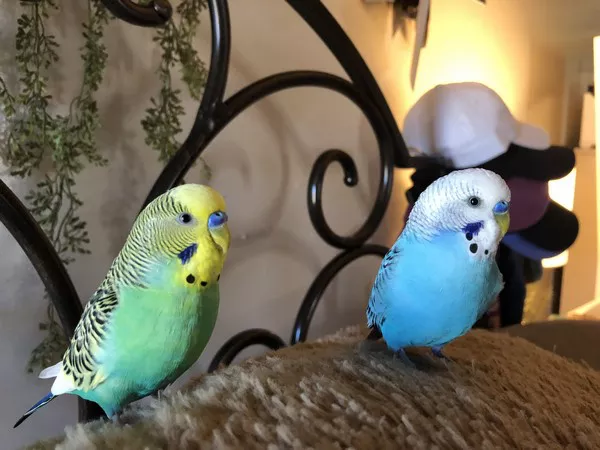Rabbits, known for their gentle demeanor and endearing nature, can face various health challenges that may necessitate critical care. Whether recovering from surgery, dealing with a chronic illness, or experiencing gastrointestinal issues, providing the right support is crucial for their well-being. This article aims to guide rabbit owners through the process of preparing a rabbit for critical care, offering insights into proper nutrition, hygiene, and medical considerations.
Understanding the Importance of Critical Care for Rabbits
Rabbits are delicate creatures with unique physiological needs. When a rabbit’s health is compromised, whether due to illness or surgery, providing critical care becomes paramount. Critical care involves a comprehensive approach to meeting the rabbit’s nutritional, hydration, and medical requirements during a period of illness or recovery. This not only aids in their physical recuperation but also supports their mental well-being.
Assessing the Rabbit’s Condition and Veterinary Consultation
Before initiating critical care, it is crucial to assess the rabbit’s condition. Observing changes in behavior, appetite, and bathroom habits can provide valuable insights into their health. However, a thorough veterinary examination is indispensable. Rabbits are known for hiding symptoms, and a professional assessment helps identify underlying issues that might not be immediately apparent.
Once a diagnosis is established, veterinarians may prescribe critical care diets tailored to the rabbit’s specific needs. These specialized diets are rich in fiber, essential nutrients, and easily digestible ingredients to support the rabbit’s recovery.
Creating a Comfortable and Safe Environment
A conducive environment plays a pivotal role in the success of critical care for rabbits. Designate a quiet, warm, and draft-free space for the rabbit to rest and recover. This environment should be free from potential stressors, such as loud noises or other pets.
Provide comfortable bedding to prevent sores and encourage relaxation. Ensuring the rabbit has sufficient space to move but restricting excessive movement, especially after surgery, is essential. A secure enclosure can prevent accidental injury and aid in the healing process.
Nutritional Support: Choosing the Right Critical Care Diet
One of the cornerstones of rabbit critical care is nutrition. Rabbits have unique digestive systems, and their diet directly impacts their overall health. Critical care diets are specially formulated to meet the nutritional requirements of rabbits during periods of illness or recovery.
These diets typically come in powder form, requiring reconstitution with water. The resulting slurry can be administered through syringes, ensuring precise and controlled feeding. It is essential to follow the veterinarian’s recommendations regarding the frequency and amount of critical care diet administered.
Administering Critical Care: Techniques and Best Practices
Administering critical care can be challenging, especially for owners unfamiliar with the process. To ensure successful feeding sessions, it is crucial to approach the task with patience and gentleness. Here are some techniques and best practices:
Syringe Feeding: Use a syringe to administer the critical care slurry directly into the rabbit’s mouth. Hold the syringe at an angle to avoid aspiration, and allow the rabbit to swallow between small amounts.
Comfort and Positive Reinforcement: Create a positive association with feeding by offering gentle strokes or verbal reassurance. This helps alleviate stress and makes the process more manageable for both the rabbit and the caregiver.
Consistency in Feeding Schedule: Establish a consistent feeding schedule to regulate the rabbit’s intake and ensure they receive the necessary nutrients regularly. This routine contributes to stability and aids in the recovery process.
Hydration: Ensuring Proper Fluid Intake
Hydration is a critical aspect of rabbit care, especially during illness or recovery. Rabbits may become dehydrated due to reduced water intake or underlying health issues. In addition to syringe feeding critical care diets, it is essential to monitor and promote proper hydration.
Water Content in Critical Care Diets: Some critical care diets have increased water content, aiding in hydration. However, it is essential to monitor the rabbit’s overall water intake and, if necessary, administer additional water through a syringe.
Offering Fresh Water: Ensure a clean and easily accessible water source is available. Some rabbits may prefer sipping from a bowl, while others may prefer a sipper bottle. Experiment with both options to determine the rabbit’s preference.
Medical Considerations and Medication Administration
In certain cases, rabbits undergoing critical care may require medication to address specific health issues. It is crucial to follow the veterinarian’s instructions regarding medication dosage, frequency, and administration method. Here are some considerations when administering medication to rabbits:
Proper Handling Techniques: Gentle and confident handling is essential when administering medication. Wrapping the rabbit in a towel can provide a sense of security and prevent unnecessary movement.
Combining Medication with Critical Care: Some medications can be mixed with the critical care slurry for easier administration. Confirm with the veterinarian whether this is suitable for the prescribed medication.
Monitoring for Side Effects: Keep a vigilant eye for any adverse reactions to medications. If there are signs of discomfort or side effects, contact the veterinarian promptly for guidance.
Monitoring and Adjusting Critical Care Plans
Rabbit health can be dynamic, and adjustments to the critical care plan may be necessary based on the rabbit’s progress. Regular monitoring of vital signs, weight, and overall well-being is essential. Consult with the veterinarian if there are any concerns or if modifications to the critical care plan are needed.
Weight Monitoring: Regularly weigh the rabbit to track any changes. A sudden drop in weight may indicate a need for adjustments to the diet or medical treatment.
Behavioral Observations: Pay attention to changes in behavior, such as increased lethargy or discomfort. Behavioral cues can provide valuable insights into the rabbit’s overall condition.
Collaboration with the Veterinarian: Maintain open communication with the veterinarian throughout the critical care process. Share observations, ask questions, and work collaboratively to ensure the rabbit receives the best possible care.
Addressing Gastrointestinal Issues: Hay and Gut Mobility
Rabbits are herbivores with a unique digestive system heavily reliant on fiber, primarily obtained from hay. During critical care, maintaining gut mobility is crucial to prevent complications such as gastrointestinal stasis. Here’s how to address gastrointestinal issues effectively:
See Also:Syringe Feeding for Rabbits: Quantity and Best Practices
Hay Availability: Ensure access to high-quality hay at all times. Hay provides essential fiber and promotes healthy gut function. If the rabbit is reluctant to eat hay, consider offering different types to identify their preference.
Encouraging Hay Consumption: Incorporate hay into the critical care diet or offer it separately to encourage the rabbit to consume an adequate amount. Hand-feeding small amounts of hay can also be a helpful strategy.
Gut Mobility Exercises: Gentle massage and mobility exercises can aid in stimulating gut motility. Consult with the veterinarian for guidance on specific techniques and the appropriateness of such exercises based on the rabbit’s condition.
Long-Term Care and Transitioning Back to Regular Diet
As the rabbit progresses in their recovery, transitioning back to a regular diet is a gradual process. Long-term care involves a strategic approach to reintroduce a balanced and varied diet. Consider the following steps:
Gradual Diet Transition: Slowly introduce small amounts of fresh vegetables and pellets into the rabbit’s diet as they regain their appetite. Monitor their response to each addition and adjust accordingly.
Monitoring Stool Quality: Pay close attention to the rabbit’s fecal output during the transition. Changes in stool quality can indicate whether certain foods are well-tolerated or need to be adjusted.
Continued Veterinary Check-ups: Schedule regular follow-up appointments with the veterinarian to monitor the rabbit’s progress and make any necessary adjustments to their care plan.
Conclusion: Nurturing the Health and Well-Being of Rabbits
Critical care for rabbits is a multifaceted process that requires dedication, patience, and a deep understanding of the rabbit’s unique needs. By assessing the rabbit’s condition, providing the right nutrition, ensuring proper hydration, administering medications as needed, and collaborating closely with the veterinarian, rabbit owners can contribute significantly to their pet’s recovery and overall well-being.
In times of illness or recovery, the bond between a rabbit and its caregiver is strengthened through compassionate care and a commitment to meeting the rabbit’s specific needs. With the right knowledge and approach, critical care becomes not only a therapeutic intervention but also a testament to the unwavering dedication to the health and happiness of these beloved companions.
Related Topics:
All You Need To Know About Nature Crest Rabbit Feed
Is Dog Food Good for Rabbits?
How To Homemade Timothy Hay Cubes for Rabbits?






















